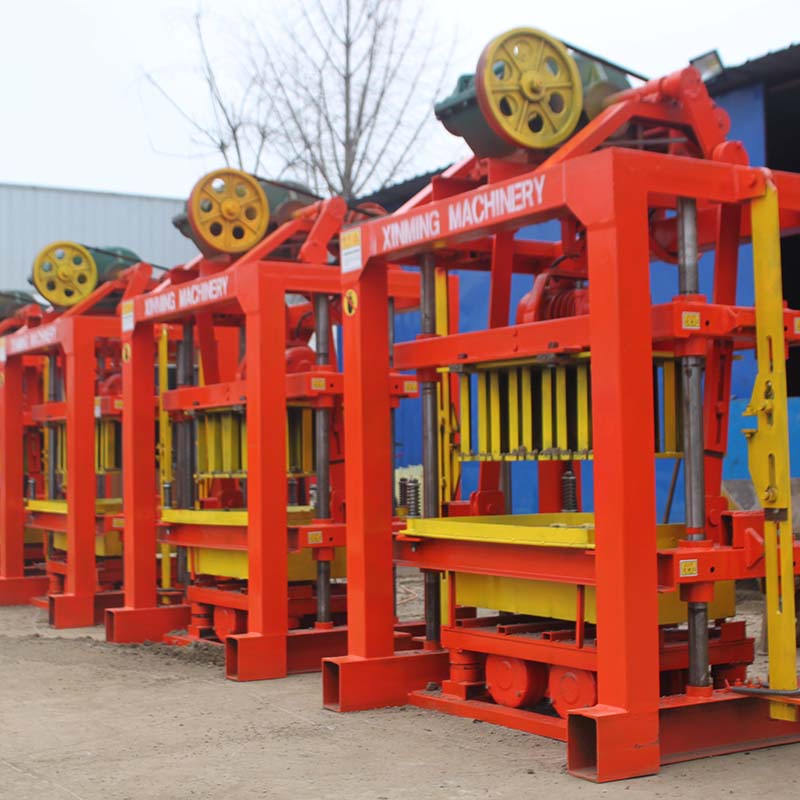
Image source:Aiwei block machine
Introduction
In traditional societies, technological advancements can have profound social and cultural implications. One such advancement is the adoption of brick making machines, which have the potential to revolutionize the process of brick production. While these machines offer numerous benefits in terms of efficiency and productivity, their introduction into traditional societies raises important questions about the impact on social structures, cultural practices, and the overall way of life. This article explores the social and cultural implications of brick making machine adoption in traditional societies.
Transforming Livelihoods and Occupations
The introduction of brick making machines can significantly impact traditional livelihoods and occupations. In societies where manual brick-making has been a traditional practice passed down through generations, the adoption of machines can lead to a decline in the demand for manual labor. This shift can cause unemployment and disrupt the social fabric of communities that have relied on brick making as a primary source of income.
Furthermore, the transition from manual brick making to machine-based production may require new skill sets and technical knowledge. This can create a division within the community, with those who possess the necessary skills benefiting from the new opportunities, while others face challenges in adapting to the changing job market. The implications of these transformations extend beyond individual livelihoods and can have a profound impact on community dynamics and social cohesion.
Cultural Heritage and Traditional Practices
Brick making in traditional societies often carries cultural and historical significance. The manual process of crafting bricks is often intertwined with local customs, rituals, and traditional knowledge. The adoption of brick making machines may challenge and erode these cultural practices, as the mechanized process replaces the traditional craftsmanship.
The loss of traditional brick-making practices can lead to a sense of cultural disconnection and the erosion of cultural identity. Brick making, once considered an art form, can be reduced to a mechanized process devoid of the cultural richness and symbolism associated with traditional methods. The loss of such cultural heritage can have far-reaching consequences on the intangible aspects of a community’s identity.
Economic Disparities and Inequality
The adoption of brick making machines can exacerbate existing economic disparities and inequalities within traditional societies. Access to technology, capital, and resources necessary for acquiring brick making machines is often limited to a privileged few. This concentration of power can lead to the consolidation of wealth and influence in the hands of a select few individuals or groups, further marginalizing already vulnerable populations.
Moreover, the mechanization of brick production can lead to increased concentration and centralization of brick-making enterprises. Small-scale brick makers who cannot afford to invest in machines may find it difficult to compete in the market. This can lead to the displacement of local brick makers, who are often deeply rooted in the community and play a significant role in its economic and social fabric.
Environmental Considerations
Traditional brick-making methods often rely on locally sourced materials and employ more sustainable practices. The introduction of brick making machines, especially those that require the use of fuel or electricity, can have adverse environmental consequences. Increased energy consumption, emissions, and resource extraction associated with machine-based brick production can contribute to environmental degradation and climate change.
Furthermore, traditional brick-making practices often incorporate knowledge of local soil characteristics, ensuring the use of suitable materials and minimizing the negative impact on the environment. With the adoption of brick making machines, there is a risk of disregarding this localized knowledge, leading to unsustainable practices and potentially harmful environmental outcomes.
Conclusion
The adoption of brick making machines in traditional societies brings about both opportunities and challenges. While these machines offer improved efficiency and productivity, they also have significant social and cultural implications. The transformation of livelihoods and occupations, the erosion of cultural practices and heritage, economic disparities, and environmental considerations are crucial factors to be addressed when introducing technological advancements into traditional societies.
To mitigate the potential negative effects, it is essential to approach the adoption of brick making machines in a holistic manner. Local communities should be actively involved in the decision-making process, ensuring their voices are heard, and their concerns are addressed. Adequate support in terms of skill development, resource allocation, and environmental regulations can help mitigate some of the negative consequences and foster a more sustainable and inclusive transition.
As traditional societies navigate the complexities of technological advancements, it is crucial to strike a balance between progress and the preservation of cultural heritage, social cohesion, and environmental sustainability. By recognizing and addressing the social and cultural implications of brick making machine adoption, societies can strive for a more inclusive and equitable future while cherishing their unique traditions and ways of life.
